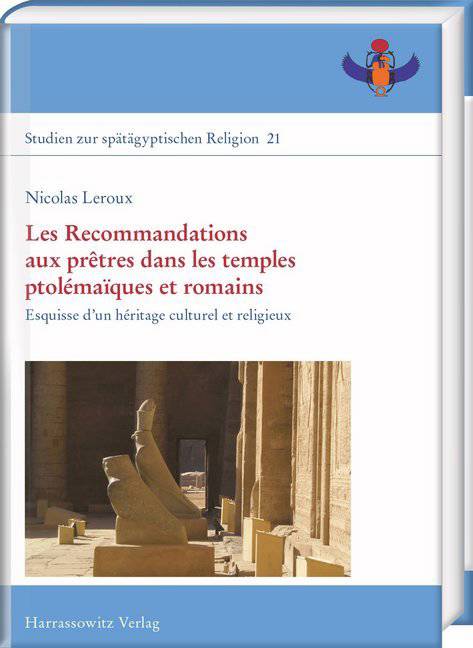
- Retrait en 2 heures
- Assortiment impressionnant
- Paiement sécurisé
- Toujours un magasin près de chez vous
- Retrait gratuit dans votre magasin Club
- 7.000.0000 titres dans notre catalogue
- Payer en toute sécurité
- Toujours un magasin près de chez vous
Les Recommandations Aux Pretres Dans Les Temples Ptolemaiques Et Romains
Esquisse d'Un Heritage Culturel Et Religieux
Nicolas LeRoux
285,45 €
+ 570 points
Description
The texts traditionally called "Recommendations to priests" are hieroglyphic inscriptions engraved between the middle of the 2nd BC and the 1st AD in the service side doors of some temples of the Ptolemaic and Roman periods (Edfu, Dendera, Kom Ombo and Philae). These texts are very original in that they exhort the priests who enter the temple to adopt an exemplary conduct with stated rules. They have been known since the 19th century, but no comprehensive study has so far been devoted to them. This book fills that gap. First of all, it constitutes the first complete edition of this corpus: on the basis of a new establishment of the text and a systematic comparison with contemporary and earlier private priestly inscriptions, the corpus is fully translated and commented. It also seeks to provide answers to the complex and fundamental question of the relationship between the different versions of the Recommendations to priests. Finally, it provides the reader with new answers to questions concerning the delimitation of the corpus, the structuring of texts, their transmission and their nature. The work thus demonstrates in particular that the homogeneity of the texts is only apparent and that there is in reality heterogeneity of nature: some texts are resolutely rhetorical and literary while others are clearly normative. This heterogeneity is the result of the history of genesis and of the transmission of texts, the reconstruction of which leads to the establishment of the existence of a pre-original version of the Recommendations to priests.
Spécifications
Parties prenantes
- Auteur(s) :
- Editeur:
Contenu
- Nombre de pages :
- 466
- Langue:
- Français
- Collection :
- Tome:
- n° 21
Caractéristiques
- EAN:
- 9783447110693
- Date de parution :
- 10-10-18
- Format:
- Livre relié
- Format numérique:
- Genaaid
- Dimensions :
- 210 mm x 297 mm
- Poids :
- 1586 g

Seulement chez Librairie Club
+ 570 points sur votre carte client de Librairie Club
Les avis
Nous publions uniquement les avis qui respectent les conditions requises. Consultez nos conditions pour les avis.








